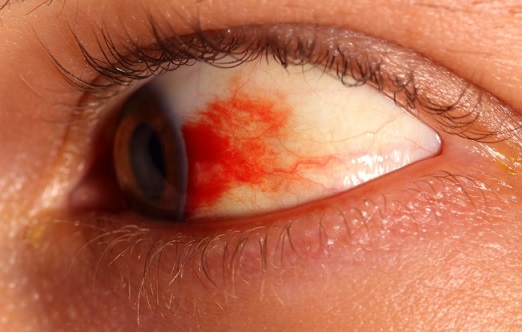Nikhil Prasad Fact checked by:Thailand Medical News Team Apr 16, 2025 5 hours, 14 minutes ago
Medical News: A Closer Look at How Epigenetic Changes Drive Diabetic Eye Disease
Scientists from The Affiliated Eye Hospital of Nanjing Medical University and The Fourth School of Clinical Medicine at Nanjing Medical University in China have discovered new ways to potentially treat diabetic retinopathy—a serious eye complication from diabetes—by focusing on changes in the body’s histones, the proteins that help control how genes are used.
 Histone Modifications Could Help Stop Vision Loss from Diabetes
Histone Modifications Could Help Stop Vision Loss from Diabetes
Diabetic retinopathy affects millions worldwide and is one of the top causes of blindness among people with diabetes, especially those over the age of 40. It begins when high blood sugar levels damage the tiny blood vessels in the eye, eventually leading to vision loss. Treatments like steroid injections, laser therapy, and anti-VEGF drugs can help slow the disease, but they also come with side effects and don’t work for everyone. That’s why researchers are now turning their attention to a new area—epigenetic therapy, which changes how genes work without altering the DNA itself. This
Medical News report explores how one form of epigenetic control called histone modification could offer hope for new treatments.
What Are Histones and Why Do They Matter
Histones are special proteins that act like spools for DNA, helping it wind into tight bundles inside our cells. These bundles, called chromatin, can be either open or closed—deciding whether certain genes are turned on or off. Scientists have discovered that tiny chemical changes to histones—such as adding or removing groups like acetyl, methyl, lactyl, citrulline, or even ubiquitin—can control how tightly DNA is wound. This, in turn, affects whether genes involved in inflammation, blood vessel growth, or cell death are activated. In diabetic retinopathy, this control goes haywire due to high glucose levels in the blood.
How Histone Modifications Drive Retinal Damage
The study revealed several types of histone modifications linked to diabetic retinopathy. Here’s what the scientists found:
-
Histone Acetylation:
Enzymes called HDACs remove acetyl groups from histones, making DNA more tightly packed and genes harder to access. In diabetic retinopathy, HDAC levels go up, increasing oxidative stress and inflammation. But certain compounds, like resveratrol (from grapes) and curcumin (from turmeric), can block these enzymes and protect the retina.
-
Histone Methylation:
Adding or removing methyl groups changes how genes are expressed. In diabetic eyes, harmful changes in methylation patterns lead to the activation of damaging proteins like Rac1 and MMP-9, which promote inflammation and kill retinal cells. Drugs that restore normal methylation patterns, like minocycline and exenatide-4, may offer some protection.
-
Histone Lactylation:
This newer discove
ry links lactate (a byproduct of sugar metabolism) to histone changes. Excess lactate in diabetic eyes drives inflammation and abnormal blood vessel growth by altering gene expression. Blocking enzymes like LDHA or using HDAC inhibitors might reduce this harmful response.
-
Histone Citrullination:
In diabetic retinopathy, citrullinated histones trigger the release of NETs (neutrophil extracellular traps), which fuel eye inflammation and blood vessel leakage. Drugs that stop this process, such as PAD4 inhibitors, may reduce disease severity.
-
Histone Ubiquitination and Others:
Other modifications like ubiquitination, SUMOylation, and phosphorylation also play roles in DNA repair and inflammation. Disruption in these processes from high glucose can cause lasting damage to retinal cells. Restoring balance through targeted therapies could provide additional treatment options.
How These Findings Could Shape Future Treatments
The exciting part about all these histone changes is that they’re reversible. That means they can be targeted with drugs to potentially stop or even reverse the damage. Some drugs that affect histone-modifying enzymes are already being tested for cancer and other diseases. Others like curcumin and resveratrol are available as natural supplements and are being explored for diabetic eye disease. Future therapies may involve using these drugs to target specific epigenetic markers in the eye, preventing the disease from progressing or even reversing early damage before vision is lost.
Conclusion
This breakthrough in understanding how histone modifications affect diabetic retinopathy offers a promising new path for treatment. By targeting the enzymes that control these modifications, doctors might one day stop the disease in its tracks or even prevent it altogether. While more research is needed, this approach has the potential to offer more precise, effective, and safer treatments compared to what is currently available. These findings also open the door to using simple blood tests for early detection based on histone markers, enabling timely interventions that could save sight. The future of treating diabetic blindness may lie not in invasive surgery or injections, but in tiny molecular switches that quietly regulate our genes.
The study findings were published in the peer reviewed journal: Biomolecules.
https://www.mdpi.com/2218-273X/15/4/575
For the latest on Diabetic Retinopathy, keep on logging to Thailand
Medical News.
Read Also:
https://www.thailandmedical.news/news/new-blood-biomarkers-could-help-detect-eye-damage-in-diabetic-retinopathy
https://www.thailandmedical.news/news/study-warns-that-rock-inhibitors-used-in-glaucoma-and-diabetic-retinopathy-treatments-can-cause-corneal-epithelial-edema
https://www.thailandmedical.news/news/lipoxin-a4-as-a-hopeful-treatment-for-diabetic-retinopathy
https://www.thailandmedical.news/articles/ophthalmology-(eye-diseases)
https://www.thailandmedical.news/articles/glaucoma-news
https://www.thailandmedical.news/pages/thailand_doctors_listings
